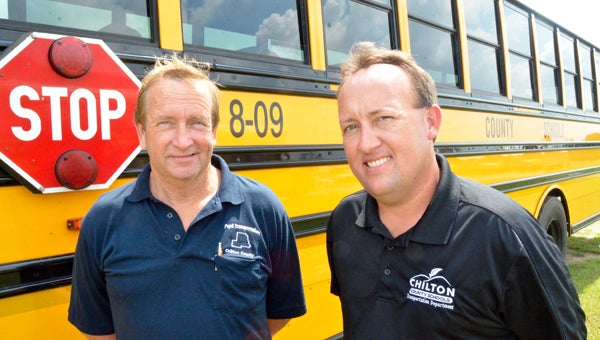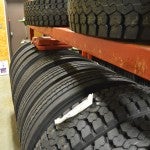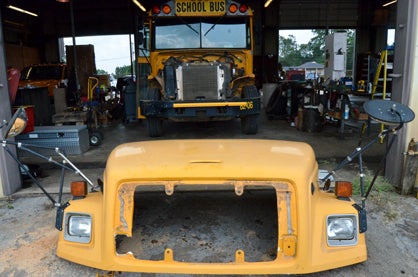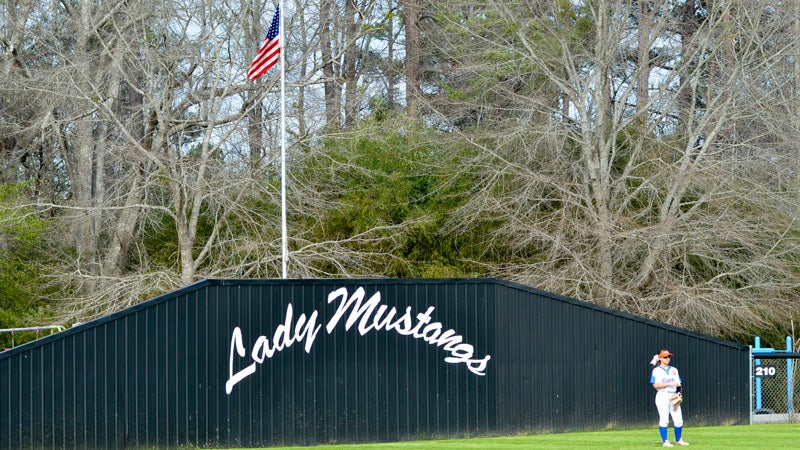School bus maintenance crew works to keep students safe
Published 10:40 am Wednesday, August 26, 2015

Bus shop: Shop Foreman Bobby Martin (left) and Transportation Supervisor Jason Griffin work to ensure the safety of students who ride Chilton County school buses. (Photos by Stephen Dawkins)
If anyone knows how safe students who ride Chilton County buses are on their way to and from school each day, it’s Bobby Martin.
The foreman of the county bus shop, Martin works on those buses each day.
“My grandkids ride these buses,” Martin said, in an ultimate show in confidence.
The Chilton County bus shop has been recognized regularly as one of the best in the state, based on state inspections.
State inspectors visit for a couple of weeks every February. They get started early in the morning checking about 130 buses in service in the county.
“They check every tire, light, air leak—everything,” Martin said. “They’re very thorough, and they’re always really impressed when they come here.”

Regular maintenance: The bus maintenance crew tracks every oil change and dollar spent on each of the county’s buses (above), and keeps supplies, including tires, well-stocked (below).
The most recent inspections found three buses with “major deficiencies,” including fuel leaks and steering system problems, which were corrected.
The 2.5 percent of buses with deficiencies was comparable to other systems in the state.
Leaks are the most common issues.
“That’s an everyday occurence,” Martin said.
In addition to yearly state inspections, buses are inspected by the maintenance crew and drivers much more often, Transportation Supervisor Jason Griffin said.
Drivers are required to inspect their buses at the beginning and end of each trip, and keep a log of any issues they notice.
Drivers also monitor each other’s buses by calling the shop about any issues they notice about the bus in front of them on the road, Griffin said.
Each of the buses are inspected, to some extent, more than 400 times each year.
The state provides funding for new buses every 10 years, so most of the buses on the road are less than 10 years old. Most have less than 140,000 miles when they’re taken off the road.
“When that bus comes off the route, it’s in as good of shape as it was 10 years ago,” Martin said.
Chilton County buses have such a good reputation that they can be sold for top dollar on a national bid site. Locals sometimes call to complain that they aren’t given a chance to buy the buses as they used to be before school systems could ensure they were collecting as much money as possible for the buses by using the website.
The average new school bus costs about $90,000 and is built by Thomas Built Buses or Blue Bird.
Local buses run about 100 regular routes in addition to field trips and athletic competitions that can take the buses across the state and even into other parts of the country, Griffin said.
Each trip averages about 50 students per bus, he said.
Their safety is in the hands of a staff of six mechanics, a parts manager, supervisor and secretary.
“We’ve got a great staff,” Martin said. “They take pride in what they do.”
Driving around on dirt roads in Chilton County takes a toll on the buses.
“People don’t realize the beating and banging these things take every year,” Martin said.

Out of commission: Rough dirt roads take their toll on buses, including breaking off the front end of one bus this week.
But Griffin, Martin and the rest of the bus shop employees work to make sure the buses are in good shape for the safety of students and drivers.
“It’s the safest form of transportation there is,” Griffin said.




